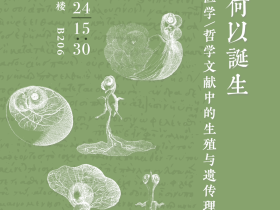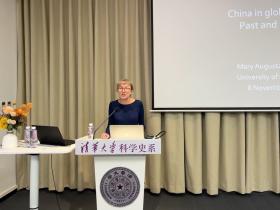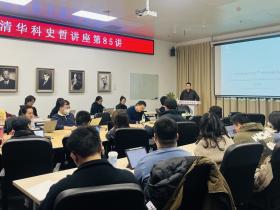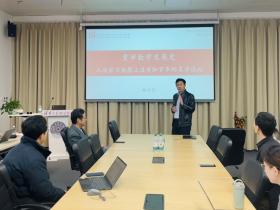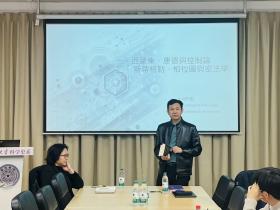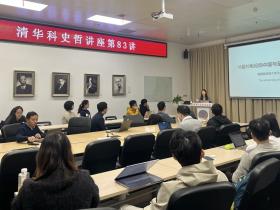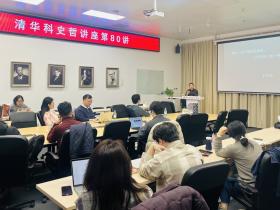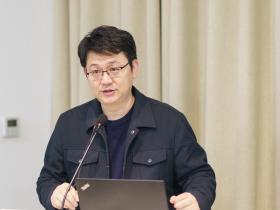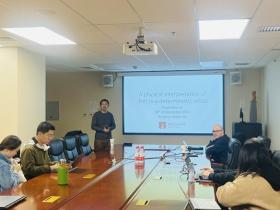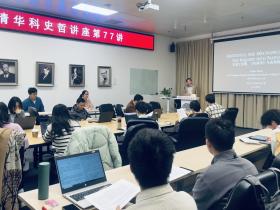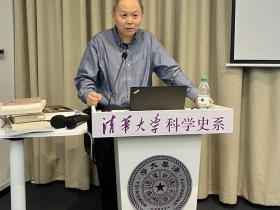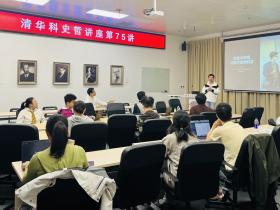On Tuesday, November 28, 2023, the Department of the History of Science at Tsinghua University held the 57th Tsinghua Lecture on the History of Science, Philosophy, and Technology in the department’ s auditorium. The lecture featured Dr. Nicola Polloni, a Marie Curie Research Fellow at the Institute of Philosophy, University of Porto, Portugal. Dr. Polloni’s presentation was titled “The Theory of Matter in Late Scholasticism,”and it was chaired by Ms. Jiang Che from the Department of the History of Science at Tsinghua University. Before the lecture began, Ms. Jiang Che introduced Dr. Polloni’ s academic background and the topics he focuses on.
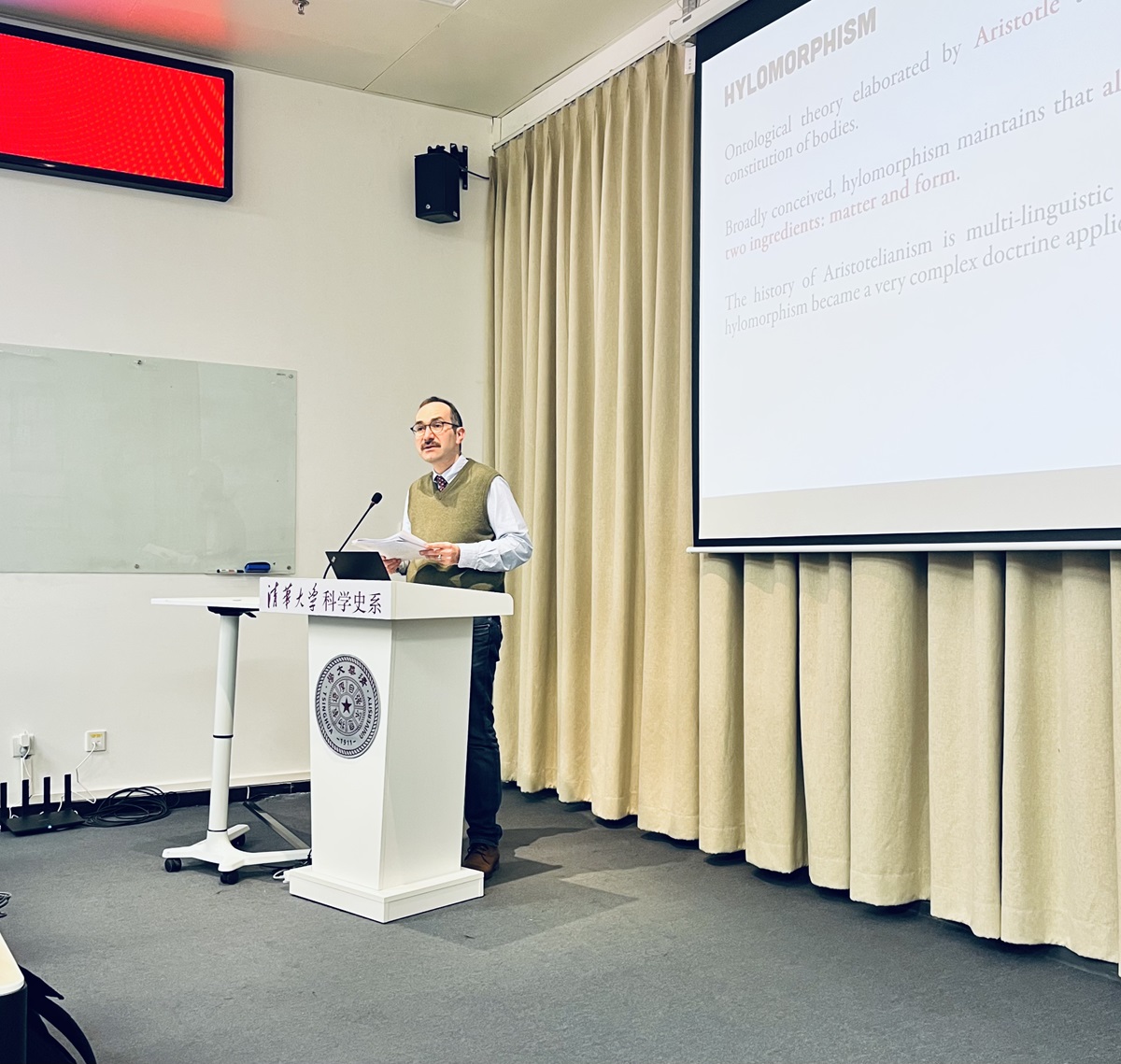
Dr. Polloni’s lecture was divided into four main parts:
- An introduction to hylomorphism in scholastic philosophy;
- Francisco de Toledo’s theory of matter;
- A comparison between Toledo’s theory and the Aristotelian commentary of the University of Coimbra;
- Summary and discussion.
In the first part, Dr. Polloni provided an overview of the basic idea f hylomorphism within Aristotelianism. Broadly speaking, hylomorphism posits that all bodies are composed of two parts—matter and form—in a metaphysical sense, a view commonly accepted by scholastic philosophy. He also identified two major categories and four subcategories of approaches to studying bodies: the metaphysical approach (as being, as substance, and as the union of form and matter) and the natural philosophical approach (movement and change). Dr. Polloni then introduced the metaphysical and natural philosophical concepts of motion in scholastic philosophy and used this foundation to distinguish between the notions of actuality and potentiality. He further introduced the concept of “prime matter”, which plays a foundational role in questions of generation and corruption, and summarized the various positions held by scholastic philosophers regarding prime matter.
In the second part, Dr. Polloni discussed the theory of matter proposed by Francisco de Toledo, a 16th-century Jesuit from Spain. Toledo distinguished between two types of matter: metaphysical and physical. In natural philosophy, prime matter should be more “thick” (as Robert Pasnau puts it). Toledo then proposed a dual distinction between accidental and substantial change: first, the substrate of accidental change is a complete and perfect substance, while matter itself is imperfect and only becomes perfect through the substantial form. Second, the union of substance and accident is merely a contingent union, whereas the union of prime matter and substantial form is real and substantial. Finally, Toledo argued that there are two distinct types of substances: complete and incomplete (i.e., prime matter and substantial form). Toledo’s conclusion was that prime matter is an incomplete and simple substance, and so is form; matter cannot be, as Thomism suggests, merely pure potentiality. On this basis, Toledo discussed how matter and potentiality are related.
In the third part, Dr. Polloni commented on the theory of matter in the Jesuit Coimbra commentary and conducted a comparative analysis between Toledo and the Coimbra commentary. The Coimbra commentary presents a complex stance on prime matter but generally holds that prime matter cannot be a composite of potentiality and actuality but is instead pure potentiality, specifically passive potentiality. Therefore, matter cannot act as an active principle but can only receive substantial forms. Dr. Polloni then introduced the theoretical problems arising from this stance and discussed Prieto Lopez’s reconstruction of the topics related to the Coimbra commentary, as well as his own new interpretive approach.
In the final part, Dr. Polloni summarized his lecture. Both Coimbra and Toledo regarded prime matter as a kind of substrate removed from human intelligence. They approached this entity using the method prescribed by Aristotle, examining this matter through the analogy of accidental and substantial change. The Coimbra commentary inherited the Thomistic position, holding that prime matter is pure potentiality, while Toledo inherited the Scotistic theory of matter, arguing that prime matter has actuality. Toledo’s interpretation of prime matter was more influential in the early modern world because his conception of prime matter was closer to the physicalist understanding of early modern philosophers and scientists. Thus, to some extent, “prime matter” could continue to serve as an explanatory tool for these early modern thinkers to interpret nature. However, to integrate into the subsequent physicalist ontology, prime matter must become a “physical“ entity, and the physicalization of prime matter means the destruction of the metaphysical framework in which it resides.
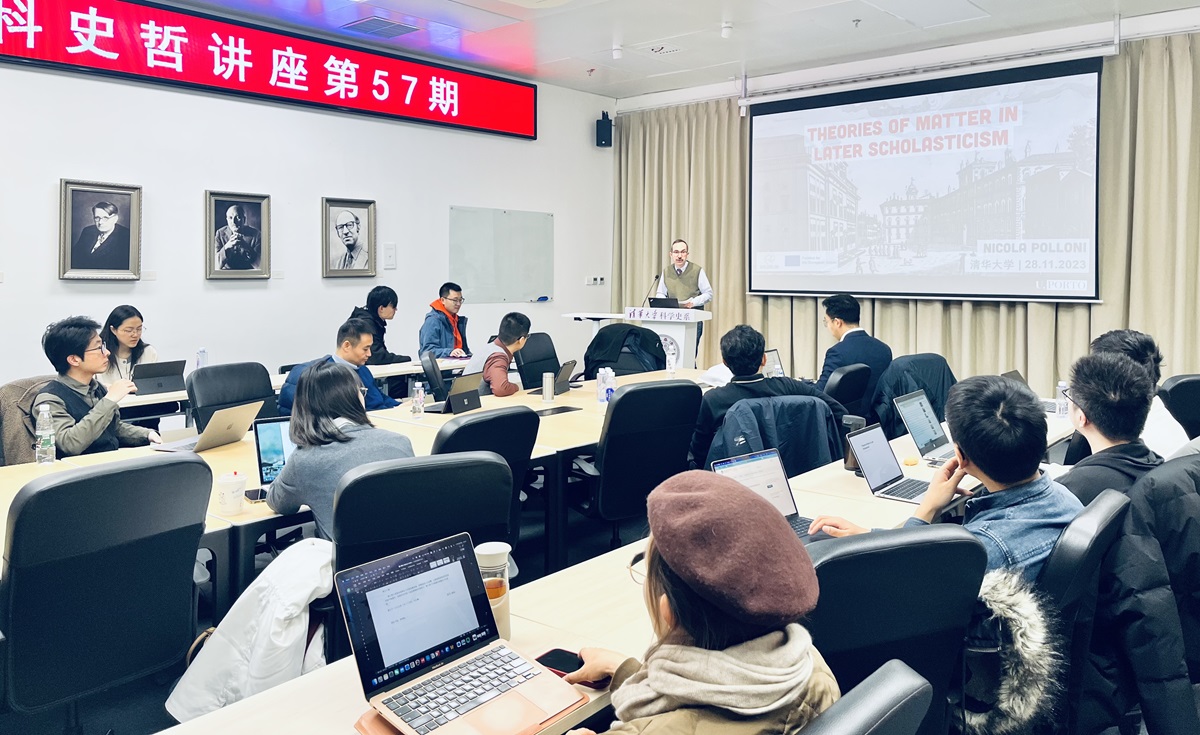
At the end of the lecture, Dr. Polloni engaged in a lively discussion and exchange with the audience, covering topics such as the nature of matter, the relationship between matter and form, medieval philosophy, and the relationship between epistemological arguments and attitudes of faith.
After the lecture, Ms. Jiang Che, on behalf of the Department of the History of Science at Tsinghua University, presented Dr. Polloni with a beautiful commemorative gift.



